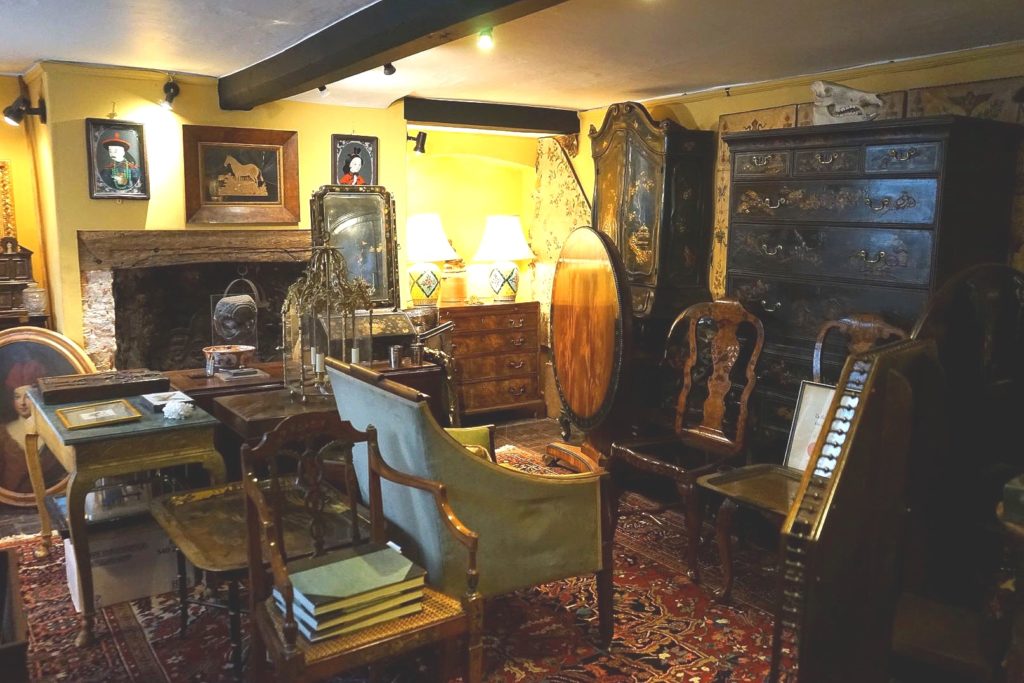Welcome back to the world of antique preservation. In this article, we will be discussing the often-overlooked aspect of collecting – the ambient conditions of the rooms in which you place your precious antique collection. As we change seasons it will be as well to remember the flux in some of the factors affecting the home environment.
It’s essential to note that previous prevailing conditions of antiques in houses – or indeed in storage – can differ from your own. Although antiques have survived for a considerable amount of time, they may not have stabilised entirely. Some antiques may have been in old draughty houses exposed to varying levels of humidity. Today, the risks are different, with hermetically-sealed double glazing coupled to highly-efficient central heating systems.
It’s now more important than ever to monitor humidity levels in order to protect your antiques (and your health). An atmosphere that is too dry can lead to warping, lifting of veneers, and drying out of old animal-skin glues causing weakened joints (in your antiques, not your body). These effects can be very difficult for any cabinet maker to put right, and sometimes impossible.
To ensure the optimum ambient levels of humidity, one should aim for around 35% to 65%, with a room thermostat set at approximately 68 degrees F to 75 degrees F, avoiding fluctuations beyond these levels. High humidity levels may well cause potential problems of mould and discolouration.
Investing in a hygrometer (humidity-measuring device) would be an excellent idea to monitor and thus maintain the proper humidity levels for your antiques. You should also avoid placing antiques near a heat source and you may find a humidifier handy to regulate the humidity levels.
Direct sunlight should be avoided as continuous exposure can cause fading, particularly of old vegetable-dyed fabrics such as needlework and silks. Collections of miniatures, tapestries, and samplers should be covered when exposed to daylight and ideally viewed after the sun has gone down.
The same advice applies to paintings, whether on wood or canvas. It’s crucial to be vigilant but not become neurotic about these risks. By remaining attentive, you can ensure the longevity of your antique collections.

The preservation and conservation of antiques is a delicate process that requires attention to detail and a thorough understanding of the factors that can impact their condition. As an antique collector, it’s important to bear in mind that your antiques may have different requirements than other pieces of furniture and so forth, due to their age, condition, and provenance.
When cleaning your antiques, it’s important to use the right materials and techniques to avoid causing damage. Harsh chemicals, abrasive cloths, and scrubbing can all cause damage to antique surfaces, leading to scratches, discolouration, etc. It’s advisable to use a soft cloth or brush – but be ultra careful using cleaning solutions – to remove dust and grime from your antiques.
Proper storage is also essential for your antiques. It’s recommended to use acid-free tissue paper, foam, or any soft tissue paper to wrap and cushion your antiques when storing them. You should also avoid stacking or piling your antiques, as this can obviously lead to damage.
If you have antique textiles, such as silk, wool or lace, it’s important to store them properly to avoid damage from moths or other pests. As previously mentioned, storing them in acid-free tissue paper or in airtight containers can help to prevent damage from insects.
When transporting your antiques, it’s important to take extra precautions. Employ professional carriers such as Martin Brothers Ltd (whom we have used since the early ’60s) or pack your antiques carefully in protective materials such as soft blankets and surround with pillows to help prevent damage during transport.
Overall, preserving antiques requires a combination of knowledge/ prep, attention to detail, and care. By maintaining stable conditions, avoiding exposure to sunlight and extreme temperatures, using the right cleaning materials and techniques, and storing your antiques properly, you can ensure that your precious pieces will remain in excellent condition for years to come. Good luck and enjoy them!




